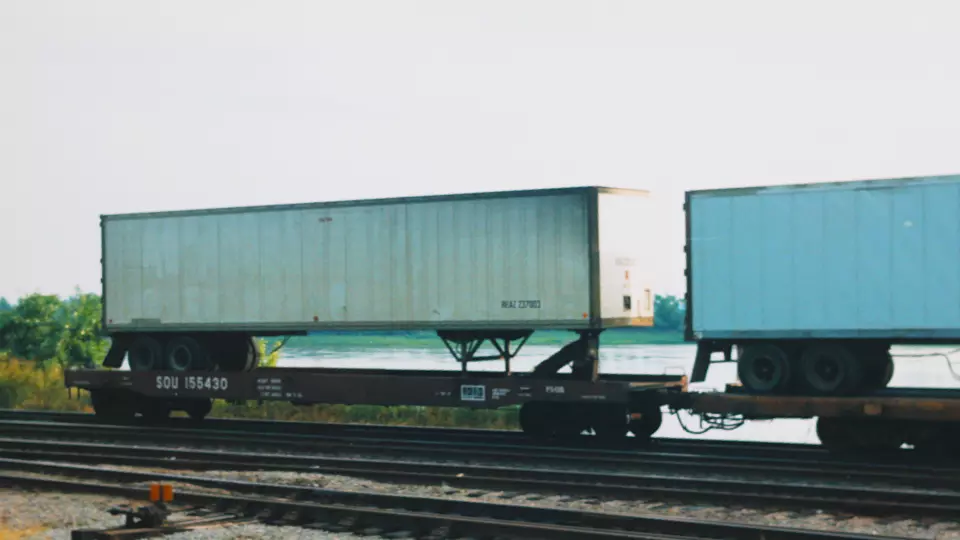The global transportation infrastructure has evolved significantly over the last few decades. As a result, the modern logistics industry facilitates the transport of different types of cargo on multiple transportation routes, including railway tracks, roads and highways, and the ocean.
The rapid influx of new and advanced freight vehicles and vessels has made transport more efficient and cost-effective. These transport units excel in different aspects of efficient transportation. For instance, smaller trucks can easily navigate through congested urban areas.
Conversely, ocean vessels can travel thousands of miles with minimal cost and emissions due to their larger storage capacities. With so many options available, transportation companies employ various methods to facilitate an all-inclusive supply chain process.
One of the most popular methods is piggyback transportation, which is the practice of transporting cargo on a primary transport unit, which is loaded on a secondary transport unit. An example would be a trailer filled with cargo, that is loaded onto a flatwagon.
In this article, we’ll explain how piggyback transportation works and share its vast applications. We’ll also discuss the key benefits of this transport method and how it can improve the overall supply chain process for transport companies.
What Is Piggyback Transportation?
Piggyback transportation is the process of moving cargo using two separate transportation vehicles, whereby one vehicle carrying the cargo is loaded onto another.

This mode of transport is most frequently used in rail freight when semi-trailers or trucks are loaded on flatcars or other types of wagons. However, there are various other types of freight vehicles that are used to piggyback.
Piggyback transportation can expedite the transportation process, and optimize costs and overall turnaround time. Logistics companies can leverage the capabilities of multiple transportation vehicles for different legs of a shipment.
With increased flexibility and versatility, they can carry out various applications, including (but not limited to) mining, construction, and even space missions.
Applications for Piggyback Transportation
The practice of Piggybacking offers several advantages, such as reduced wear and tear of the primary freight vehicle, fuel conservation, and more. In this section, we’ll talk about the main applications of piggyback transportation that make it a convenient and cost-effective option for long-distance and multi-leg freight transportation.
General Cargo Transportation
Selective carriers offering rail and ocean freight services use piggyback transportation for general cargo movement. When using rail transport, they employ one of two TOFC variations – Trailers on Flatcars or Trucks on Flatcars.
Trailer on Flatcars involves transporting different trailer types using flatcars for efficient transport over long distances. On the other hand, Trucks on Flatcars is the same process but transports trucks, instead of trailers.
This includes semi-trucks with trailers and standard straight trucks, all of which are already loaded with cargo. Similarly, in sea freight, companies can load trailers or trucks consisting of a wide range of general cargo to and from various global destinations.
In most of these cases, transporting goods on multiple trucks across vast distances can take days or even weeks and is typically much costlier than loading these trucks on secondary freight vehicles, such as trains and ships.
Bulk Cargo Transportation
Piggyback transportation is excellent for bulk cargo supply chains, especially in the mining and construction industries. For instance, mining operations require dump trucks to transport sand or ore to or from various mining sites, especially those in remote areas with no road networks.
With piggybacking, companies can avoid sending multiple dump trucks via road and stacking high fuel costs. They can load the trucks (empty or filled with bulk cargo) onto specialized railcars to significantly reduce their cost per mile. Carriers can apply the same method to other construction vehicles and heavy machinery types.
Space Missions
Piggyback transportation has been employed in the space industry for decades to facilitate and aid extraterrestrial exploration. The method is highly effective for space shuttle and vehicle transportation.

For example, NASA’s Space Shuttle Program launched a modified Boeing 747 aircraft to transport space shuttles to different locations, such as the Kennedy Space Center in Florida for processing and next mission preparation. The grounded space shuttles piggyback on the modified 747 using attachment points and can be transported long distances.
Benefits of Piggyback Transportation
Undoubtedly, this transportation method has benefited many industries as explained above. Below, we highlight some key advantages of piggyback transportation in more detail.
Cost-Effectiveness
Piggyback transportation helps carriers optimize costs by utilizing multiple transport modes for different shipping legs. For instance, they can use semi-trucks for trailer pickup (first leg) and delivery (last leg) while utilizing ships or trains for long-distance travel.
Strategic piggybacking can potentially save thousands of dollars on fuel and maintenance costs, improving profitability and process efficiency.
Capacity Maximization
As smaller or heavy-duty transportation vehicles lack the capability of traveling long distances, piggyback transportation allows companies to increase their weight and size capacities.
For instance, loading trucks onto trains or ships that can move huge cargo volumes in a single trip. Upon arriving at the destination terminal, these trucks can then make their final deliveries to their respective destination facilities or sites.
This approach allows companies to reduce handling as compared to arranging long-haul and cross-docking operations, improving overall turnaround time. Moreover, companies can eliminate the need to load trucks with cargo at the destination to make the final deliveries resulting in better vehicle utilization and maximization of capacity.
Limitations & Necessity
Many industries have limited transportation options due to accessibility or infrastructure issues. Piggyback transportation can help make transportation feasible using trucks and trailers on trains or ships. For instance, a production site near a seaport with no direct access can benefit from piggybacking to exchange goods or materials.
Lead-Time Minimization
By combining different transportation modes, carriers can maximize the features and benefits of each mode. Ships or trains can transport multiple trucks or trailers to remote locations with lower costs and lead times.
Industries that have taken advantage of piggybacking are mining, construction, and projects, due to the remoteness of the locations and the volume of cargo that needs to be transported.
Flexibility & Accessibility
Piggyback transportation offers greater flexibility and accessibility to carriers operating in limited-access areas, especially those in the construction or mining industry.
Since these industries operate in remote or relatively less accessible regions, transporting cargo to sites can be difficult. Trucks can easily access rail depots or shipping ports and be transported to facilities in challenging or distant locations.
Sustainability
Piggybacking is an excellent way for transport companies to reduce not only their cost per mile but also their carbon footprint. By transporting secondary transport units on primary units, they can significantly reduce carbon emissions and their environmental impact. Using more fuel-efficient ships or trains for long-distance transport can have lasting environmental benefits.

Get Free Course Access
If you enjoyed the article, don’t miss out on our free supply chain courses that help you stay ahead in your industry.

Andrew Lin
Co-Founder & Writer
at freightcourse
About the Author
Andrew is a multi-business owner with over 12 years of experience in the fields of logistics, trucking, manufacturing, operations, training, and education.
Being the co-founder of freightcourse has given him the ability to pursue his desire to educate others on manufacturing and supply chain topics.
Follow us